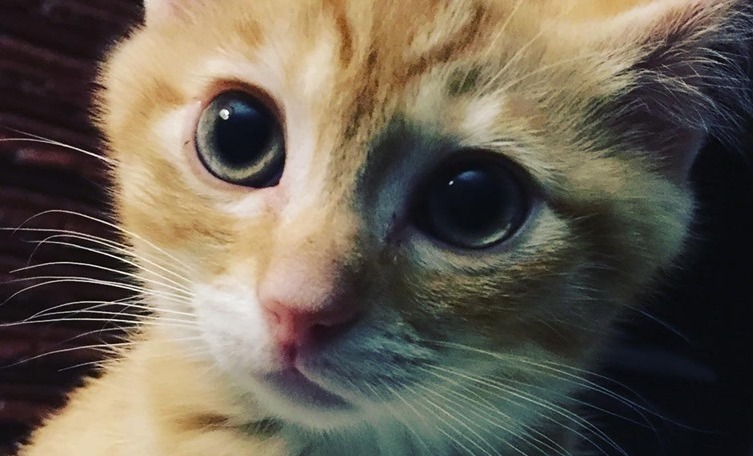

How do you want your family’s new kitten to behave? It’s a subject that should be discussed at the beginning of your relationship, to predict what your kitten needs to learn as he grows into a cat.
Ask for input from everyone who’ll be part of your new kitten’s life, including the kids in your family—even little ones. (They have words and drawings!) You can’t “ask” your other pets, but I bet you know them well enough to fill in the answers with words that describe what you think they “feel.”
You’ve already made some choices about your kitten’s behavior, if you’ve picked him or her out in person. Did you compare her to the other kittens when you visited the litter? At a shelter, did you see a variety of kittens up for adoption? Was your kitten the only one at the rescue, but you decided anyway that he was the one?
You picked the one you picked! Your choice may have been based entirely on looks (“I’ve always wanted a cat that color!”) or even breed (“It’s got to be a Siamese!”) but it’s highly unlikely that you chose your kitten, even sight-unseen, without considering temperament.
What did you like about the way your kitten behaved?
Was she bold? Did she march right up to you and stick out a paw? Was he careful? Did he sit back and observe before making friends? Did she interact only with the other kittens and avoid the humans? Did he interact only with the humans and avoid the other kittens? Did she hiss and claw? Did he purr and snuggle? What attracted you to this kitten? Why was this kitten the one you chose?
Make a mental list of the behaviors that attracted you.
Then do some speculating about your kitten’s future. Ask yourself:
▪ Could any of the behaviors that attracted you to this kitten become problems as he grows up?
▪ Is there any behavior that you see in her now that you would not wish to see in your grown cat?
▪ The bold kitten—could she be a fearless future escapee, dashing out open doors into the great outdoors?
▪ The shy kitten—could he end up unloving and unlovable, under the furniture instead of in your lap?
▪ Will her hiss and claw ever be outgrown? Could it get worse instead?
▪ Can snuggling and purring ever be overdone?
Now list how you do want your grown cat to behave.

Photo by Karen Mobley — Andrew Wyeth
Here are a few suggestions for what should be on that list:
▪ Accept handling for human interaction, physical care, grooming.
▪ Use litter box/es appropriately; do no “marking” inside the house.
▪ Use scratching equipment provided; do no destructive scratching.
▪ Accept confinement in crate/carrier for travel and veterinary care.
How you can help your kitten to achieve these basic goals?
Encourage cooperation by getting “consent” for interaction.
For example, don’t chase down and grab your shy kitten unless there’s an emergency and it’s absolutely necessary. Let the kitten come to you. Make that behavior rewarding.
Take baby steps: if it’s obvious the kitten is somewhat hand shy (fearful of human touch), don’t reach out! Consider making your hands more rewarding by anointing them with tuna juice or soft cat food. (It’s not appetizing to us, but it’ll wash off!) Your kitten may then have reason to sniff or lick your fingers. Don’t pull away, don’t move at all, don’t even talk if you think it might cause the kitten concern. Take it slowly and always let the kitten’s response be your guide. Patience is certainly important.
Offer rewarding alternatives to behaviors you don’t want.
Don’t want your furniture ruined by scratching? You don’t have to spend a fortune on fancy equipment to discourage destructive scratching! You do have to provide far more rewarding opportunities to scratch on than your favorite chair, of course. (You can also move your favorite chair out of a kitten-accessible area until the kitten learns to love the scratching equipment you’ve offered him instead!)
Experiment to see what surfaces your kitten most likes to scratch. Consider “enriching” scratching equipment with catnip or cat-attracting pheromones. Praise the kitten, too, for appropriate scratching when you observe it, but only if the “praise” you offer seems rewarding to your cat!
Don’t “punish” or “correct” unacceptable kitten behavior.
Squirt bottles and shake cans didn’t work well last century. We know so much better now. Do better: figure out what’s rewarding to your kitten. (It will vary from kitten to kitten, and from moment to moment with each kitten, too.)
Reward the behavior you want, in the smallest approximation. Don’t want your kitten interfering with your computer when you’re sitting at your desk at home? First, consider offering the kitten another attractive warm place close by as an alternative—like a heated comfy cat bed in the knee well of your desk or on a chair nearby, where the kitten can see you and you can touch the kitten, if that is what she likes, easily from your desk.
Don’t use punishment to say, “Go away, I don’t want you near me!” Use rewards to say, “Yes, that’s it, that’s a good place to be!”
Start as you mean to go on—positively!
Pick up on your kitten’s instinctive likes. Use what your kitten most enjoys at any given moment to reward the beginnings of behavior you want.
Your goal may be “coming when called,” for example. Don’t make it difficult! Make it as easy for the kitten as moving one paw in your direction, then being rewarded with something the kitten is really enthused about at that moment . . . like chasing a toy, playing with a flirt pole, getting a yummy small treat—or, strangely enough, being left alone, if that’s what is most rewarding to your kitten at that moment.
Never, ever call your kitten to do something that is not rewarding, especially not something that the kitten dislikes or that the kitten could be frightened or hurt by. Every time your kitten is called and not rewarded, your training takes some steps backward, but if your kitten is called and something bad happens, your training takes giant leaps away from your goal. It’s up to you to make wise choices!
Don’t believe that cats can’t be trained, but do believe that force, fear, and punishment will never “train” cats as well as positive reinforcement can.
Understand that your cat will learn from every interaction with you, with your family, with the world around him or her. You can’t explain the house rules to a cat in words but you certainly can reward your kitten for his earliest and tiniest attempts to “get it right.”
You can develop the sort of trusting two-way relationship that’s most conducive to teaching wisely and learning well—whether the student is human or feline. It’s your best choice!



